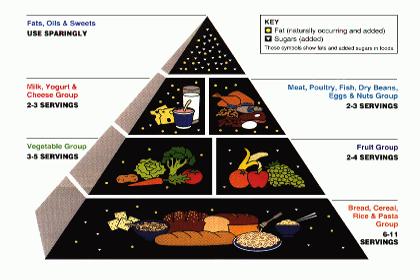
Why U.S. Dietary Guidelines Are Inappropriate for Most Americans
The 2015 to 2020 U.S. Dietary Guidelines were recently published, and while they include some positive changes, they still contain serious flaws as well. In this interview, Nina Teicholz reviews a number of them — a task for which she is particularly suited, considering she's read the entire 571-page guidance report.
Teicholz is an investigative journalist and the author of The New York Times bestseller "The Big Fat Surprise: Why Butter, Meat & Cheese Belong in a Healthy Diet." I previously interviewed her about that book, which delves deep into the topic of healthy versus unhealthy fats.
May 22, 2016 | Source: Mercola | by Dr. Joseph Mercola
The 2015 to 2020 U.S. Dietary Guidelines were recently published,1 and while they include some positive changes, they still contain serious flaws as well. In this interview, Nina Teicholz reviews a number of them — a task for which she is particularly suited, considering she’s read the entire 571-page guidance report.
Teicholz is an investigative journalist and the author of The New York Times bestseller “The Big Fat Surprise: Why Butter, Meat & Cheese Belong in a Healthy Diet.” I previously interviewed her about that book, which delves deep into the topic of healthy versus unhealthy fats.
So, why should you care about the U.S. dietary guidelines? “They don’t affect me,” you might think.
“Here’s why they matter,” Teicholz says. “They determine what foods are in the feeding assistance programs run by the US Department of Agriculture (USDA) that touch 1 in 4 Americans every month.
Those include the National School Lunch Program (NSLP) (for many people the food that their kids are getting at school), programs for the elderly, Supplemental Nutrition Assistance Program (SNAP) … and military rations.”
Dietary Guidelines Dictate What Many Americans Eat Every Day
So while you may not peruse the dietary guidelines to influence your own eating habits, they end up directly influencing the diets of many Americans, including those with the least means to take control over their own food choices, such as those depending on food programs for their daily meals.
Moreover, when you go to your doctor, your nutritionist or dietician, the nutritional recommendations you’ll get are largely based on the dietary guidelines. If following the guidelines increases your risk of health problems, then seeking professional guidance certainly doesn’t do much good.
The guidelines even have international ramifications, as nations that don’t have the resources and scientific expertise to duplicate the process simply model their own guidance after the U.S.
The rest of the world really looks to the United States as a leader in this area, even though it’s readily apparent that the guidelines must be seriously flawed in some way, since they don’t produce very good results.
Even international organizations like the World Health Organization (WHO) and the Food and Agriculture Organization of the United Nations (FAO) follow, to a large extent, the nutritional guidance developed by the U.S.
https://www.youtube.com/watch?v=RoZH8ZDTFfo
